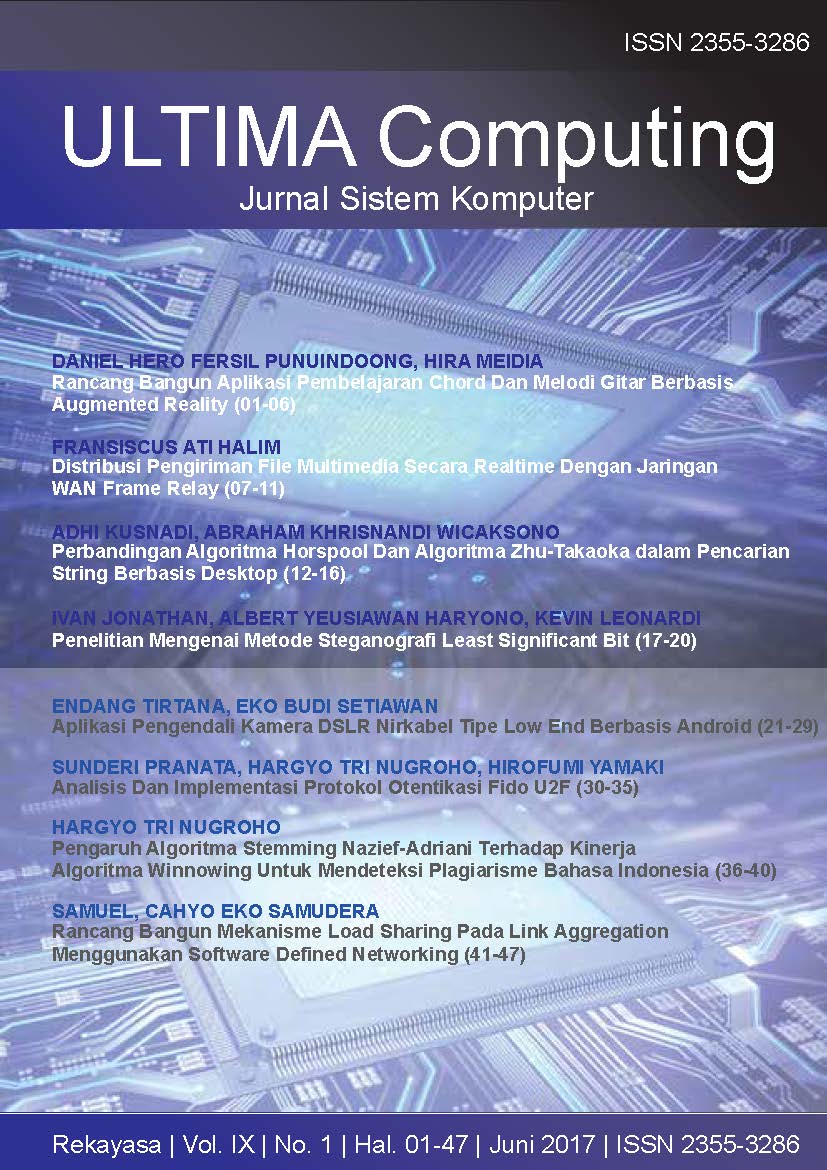Aplikasi Pengendali Kamera DSLR Nirkabel Tipe Low End Berbasis Android
DOI:
https://doi.org/10.31937/sk.v9i1.570Abstract
One of those beneficial innovations in DSLR camera it is able to connect with other mobile devices using wireless network. Its primary function is to control camera from distance and to instantly upload photos to social medial. But, not all DSLR cameras are equipped with this feature. Only the latest mid-end and high-end DSLR camera have the feature. In order to solve the previously mentioned issue, the researcher conducted a trial using Arduino and Bluetooth as the camera's wireless network. The result showed that Arduino did not have its own module and, as a result, users would need to add new modules if they wanted to add new features. This was considered ineffective and inefficient. Moreover, Bluetooth connection is rarely used nowadays due to the limited transfer rate and area coverage compare to using WiFi connection. In line with the aforementioned explanation, a research was held with the main objective to access and operate low-end DLSR camera using Raspberry Pi. The Raspberry Pi was operated using access point and controlled by smartphone.
Index Terms” Camera, DSLR, wireless, Raspberry Pi, Android
Downloads
Downloads
Published
How to Cite
Issue
Section
License
Authors retain copyright and grant the journal right of first publication with the work simultaneously licensed under a Creative Commons Attribution-ShareAlike International License (CC-BY-SA 4.0) that allows others to share the work with an acknowledgment of the work's authorship and initial publication in this journal.
Authors are able to enter into separate, additional contractual arrangements for the non-exclusive distribution of the journal's published version of the work (e.g., post it to an institutional repository or publish it in a book), with an acknowledgment of its initial publication in this journal.
Copyright without Restrictions
The journal allows the author(s) to hold the copyright without restrictions and will retain publishing rights without restrictions.
The submitted papers are assumed to contain no proprietary material unprotected by patent or patent application; responsibility for technical content and for protection of proprietary material rests solely with the author(s) and their organizations and is not the responsibility of the ULTIMA Computing or its Editorial Staff. The main (first/corresponding) author is responsible for ensuring that the article has been seen and approved by all the other authors. It is the responsibility of the author to obtain all necessary copyright release permissions for the use of any copyrighted materials in the manuscript prior to the submission.















